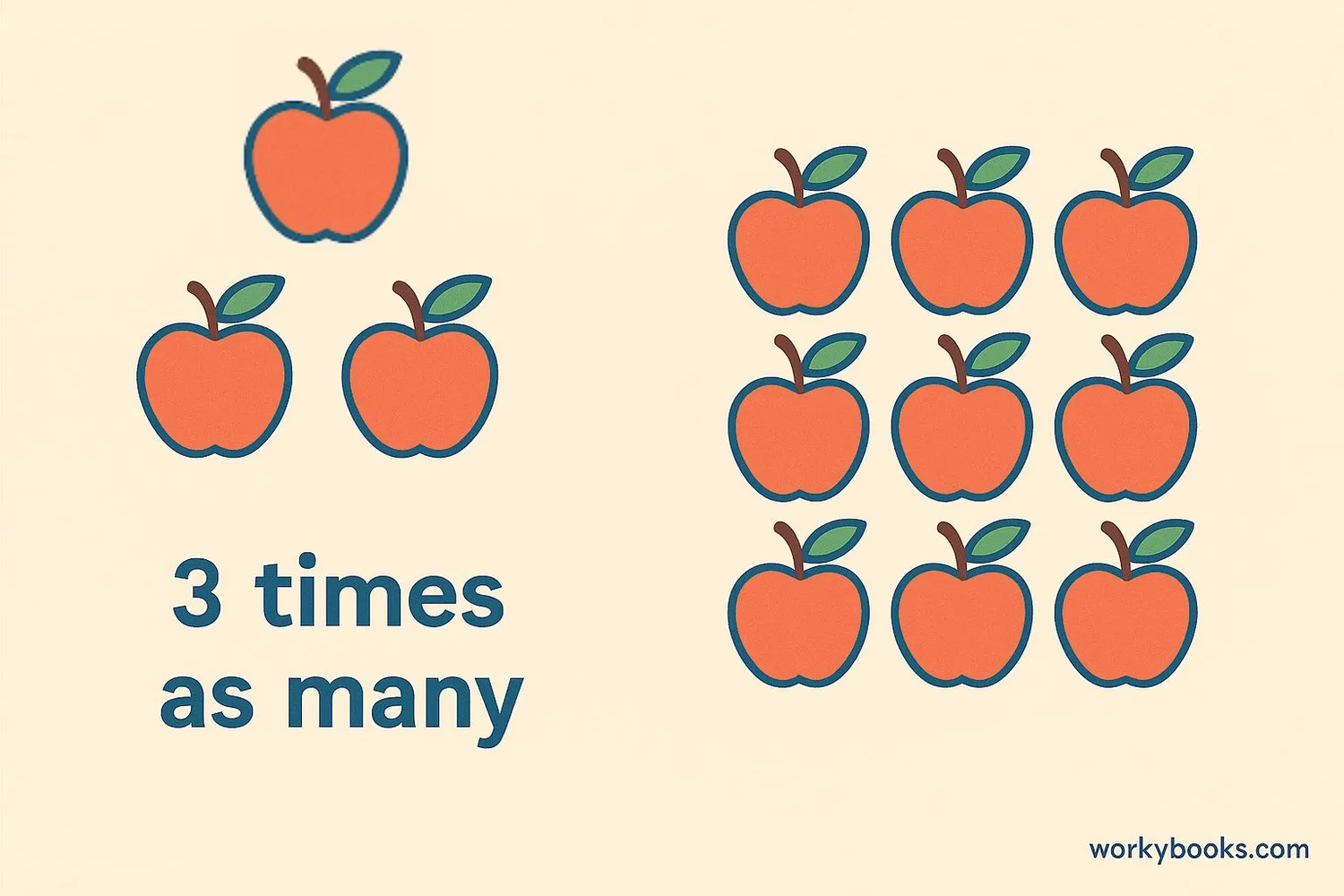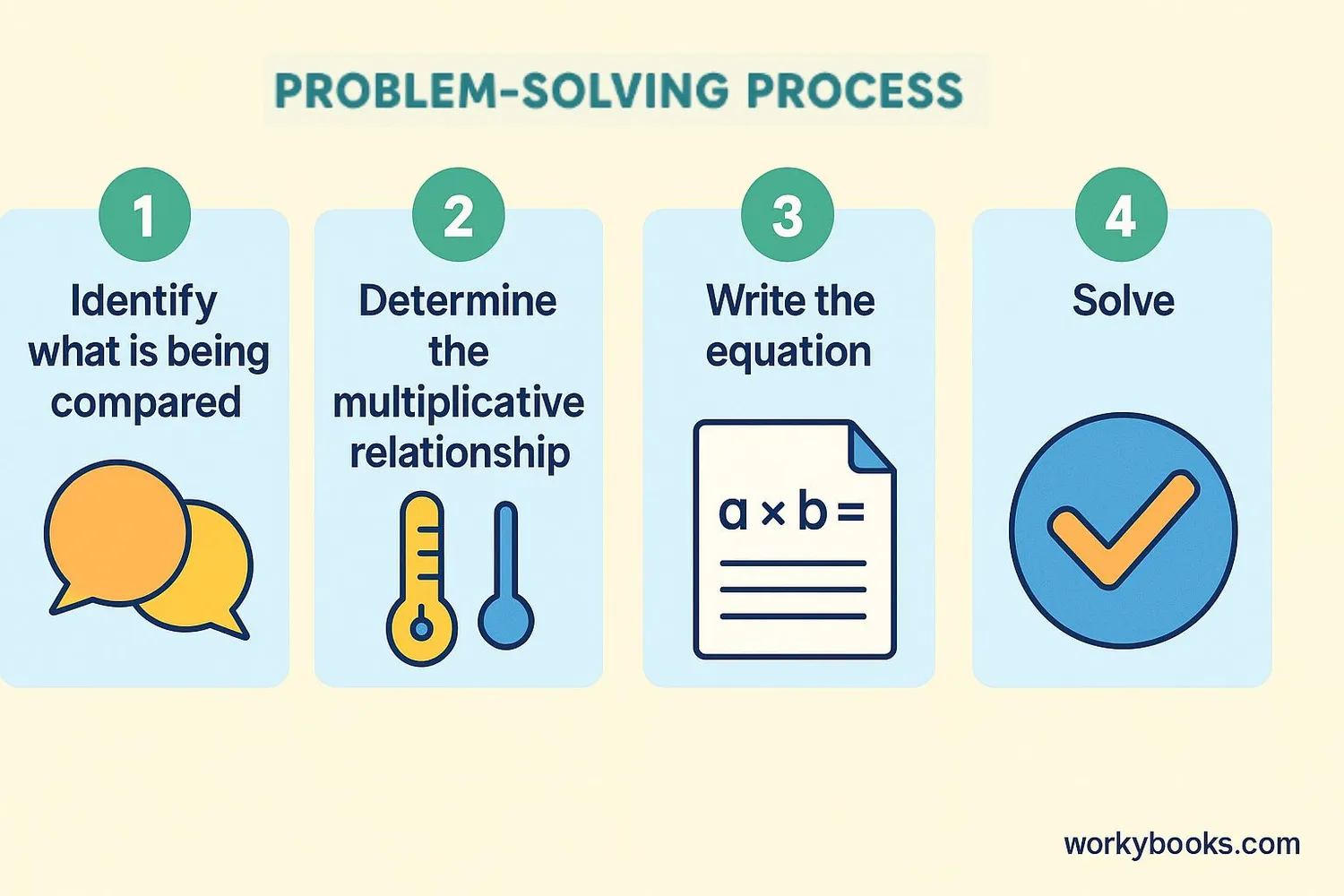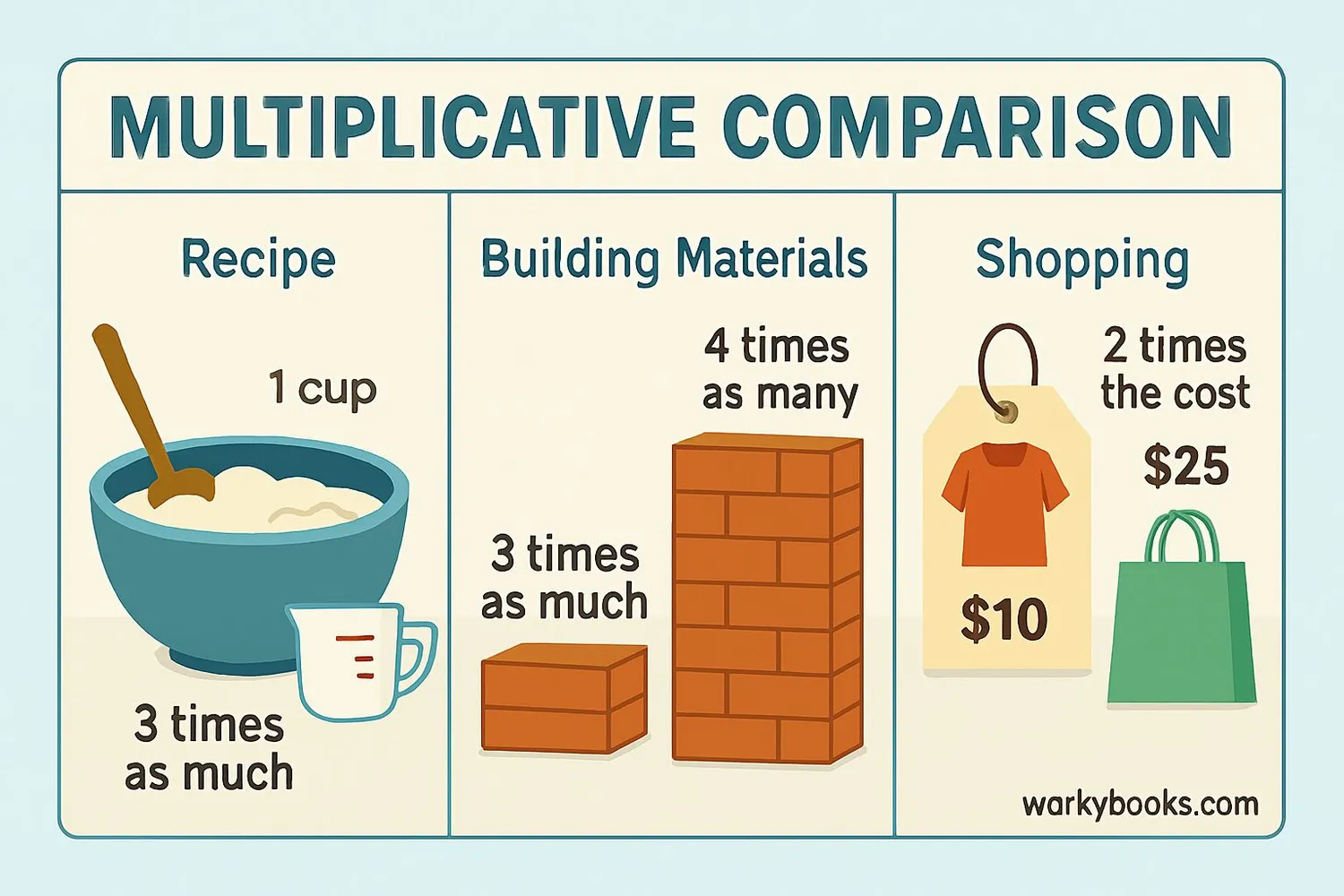Multiplicative Comparison - Definition, Examples, Quiz, FAQ, Trivia
Learn to compare quantities using multiplication with easy explanations and practice activities
What is Multiplicative Comparison?

Multiplicative comparison is a way of comparing two quantities by showing how many times larger or smaller one is than the other. Instead of just saying "more" or "less," we use multiplication to describe the exact relationship.
For example, if Sarah has 4 apples and John has 8 apples, we can say "John has twice as many apples as Sarah" or "John has 2 times as many apples as Sarah." This is a multiplicative comparison.
Multiplicative comparisons help us understand the exact relationship between numbers, not just which is bigger or smaller. They are used in many real-world situations like recipes, building projects, and shopping.
Key Concept
Multiplicative comparison uses multiplication to describe how many times larger or smaller one quantity is compared to another.
How to Solve Multiplicative Comparison Problems

Solving multiplicative comparison problems involves a few simple steps:
Step 1: Identify what is being compared. Look for words like "times as many," "times as much," or "times longer."
Step 2: Determine which quantity is the base for comparison (what we're comparing to).
Step 3: Write an equation using multiplication. If we know the smaller quantity and the multiplier, we multiply. If we know the larger quantity and the multiplier, we divide.
Key Equations
Example: A giraffe is 3 times as tall as a kangaroo. If the kangaroo is 5 feet tall, how tall is the giraffe?
Step 1: The multiplier is 3 (times as tall)
Step 2: The base for comparison is the kangaroo's height (5 feet)
Step 3: Use the equation: Larger = Smaller × Multiplier
Step 4: Calculate: 5 × 3 = 15 feet
So the giraffe is 15 feet tall.
Remember
In multiplicative comparison, the multiplier tells us how many times larger or smaller one quantity is compared to another.
Multiplicative Comparison Examples

Let's look at some examples of multiplicative comparison in different contexts:
Example 1: Sarah has 4 stickers. Michael has 3 times as many stickers as Sarah. How many stickers does Michael have?
Solution: 4 × 3 = 12 stickers
Example 2: A building is 80 feet tall. It is 4 times as tall as a nearby tree. How tall is the tree?
Solution: 80 ÷ 4 = 20 feet
Example 3: A recipe calls for 2 cups of flour and 6 cups of water. How many times more water is needed than flour?
Solution: 6 ÷ 2 = 3 times as much water
Example 4: In a class, there are 12 girls and 4 boys. How many times more girls are there than boys?
Solution: 12 ÷ 4 = 3 times as many girls
Practice looking for multiplicative comparisons in your daily life - in recipes, when shopping, or when comparing heights and distances!
Multiplicative Comparison vs. Additive Comparison
| Type | Language Used | Example |
|---|---|---|
| Multiplicative | "times as many/much" | 3 times as many apples |
| Additive | "more/less than" | 5 more apples |
Practice Tip
Look for words like "times," "twice," "double," "triple," or "half" to identify multiplicative comparison problems.
Multiplicative Comparison Quiz
Test your understanding with this 5-question quiz. Choose the correct answer for each question.
Frequently Asked Questions
Here are answers to common questions about multiplicative comparison:
Math Trivia
Discover interesting facts about multiplication and comparison:
Ancient Multiplication
The ancient Egyptians used a method called "doubling" to multiply numbers, which is based on multiplicative comparison. They would repeatedly double numbers and then add appropriate multiples to get the final product.
Scaling in Nature
Multiplicative comparison is seen throughout nature. For example, if you compare a mouse to an elephant, the elephant isn't just "bigger" - it's about 150 times heavier than a mouse, which is a multiplicative relationship.
Space Comparisons
Astronomers use multiplicative comparison to describe celestial objects. The sun is about 109 times the diameter of Earth, and Jupiter is about 11 times the diameter of Earth.
Giant Numbers
The concept of multiplicative comparison helps us understand enormous numbers. For example, a million is 1,000 times a thousand, and a billion is 1,000 times a million.





